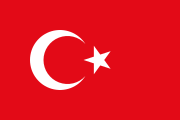Outline of Turkey
The Flag of Turkey
The Emblem of Turkey

The following outline is provided as an overview of and topical guide to Turkey:
Turkey – sovereign Eurasian country that stretches across the Anatolian peninsula in Southwest Asia and Thrace (Rumelia) at the southeastern tip of the Balkan Peninsula in Southern Europe.[1] Turkey is a democratic, secular, unitary, constitutional republic whose political system was established in 1923 under the leadership of Mustafa Kemal Atatürk, following the fall of the Ottoman Empire in the aftermath of World War I.
General reference[edit]
- Pronunciation: /ˈtɜːr.ki/ ⓘ
- Common English country name: Turkey
- Official English country name: The Republic of Turkiye
- Common endonym(s), i.e., in Turkish: Türkiye
- Official endonym(s): ⓘ
- Adjectival(s): Turkish
- Demonym(s): Turks (in Turkish language: Türkler)
- Etymology: Name of Turkey
- International rankings of Turkey
- ISO country codes: TR, TUR, 792
- ISO region codes: See ISO 3166-2:TR
- Internet country code top-level domain: .tr
Geography of Turkey[edit]


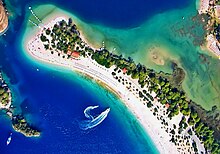
- Turkey is: a country
- Location:
- Northern Hemisphere and Eastern Hemisphere
- Time zone
- Turkey Standard Time (UTC+03:00), since 2016
- Eastern European Time (UTC+02:00) Eastern Daylight Time (UTC+03:00), until 2016.
- Extreme points of Turkey
- High: Mount Ararat 5,137 m (16,854 ft)
- Low: Mediterranean Sea and Black Sea 0 m
- Land boundaries: 2,648 km (1645 mi)
 Syria (outline) 822 km (511 mi)
Syria (outline) 822 km (511 mi) Iran (outline) 499 km (511 mi)
Iran (outline) 499 km (511 mi) Iraq (outline) 352 km (310 mi)
Iraq (outline) 352 km (310 mi) Armenia (outline) 268 km (167 mi)
Armenia (outline) 268 km (167 mi) Georgia (outline) 252 km (157 mi)
Georgia (outline) 252 km (157 mi) Bulgaria (outline) 240 km (149 mi)
Bulgaria (outline) 240 km (149 mi) Greece (outline) 206 km (5128 mi)
Greece (outline) 206 km (5128 mi) Azerbaijan (outline) 9 km (6 mi)
Azerbaijan (outline) 9 km (6 mi)
- Coastline: 7,200 km (4,474 mi)
- Population of Turkey: 82 million 19th most populous country
- Area of Turkey: 783,562 km2 (302,455 sq mi) 36th most extensive country
- Atlas of Turkey
- Cities of Turkey, by population
Environment of Turkey[edit]


- Climate of Turkey
- Environmental issues in Turkey
- Ecoregions in Turkey
- Renewable energy in Turkey
- Geology of Turkey
- National parks of Turkey
- Protected areas of Turkey
- Wildlife of Turkey
Geographic features of Turkey[edit]


- Glaciers of Turkey
- Islands of Turkey
- Lakes of Turkey
- Mountain peaks of Turkey
- Rivers of Turkey
- Waterfalls of Turkey
- Valleys of Turkey
- World Heritage Sites in Turkey
Regions of Turkey[edit]
- Aegean Region
- Black Sea Region
- Central Anatolia Region
- Eastern Anatolia Region
- Marmara Region
- Mediterranean Region
- Southeastern Anatolia Region
Ecoregions of Turkey[edit]
Administrative divisions of Turkey[edit]
Administrative divisions of Turkey
Provinces of Turkey[edit]
Provinces of Turkey Turkey is divided into 81 provinces, called iller in Turkish
Districts of Turkey[edit]
Districts of Turkey The provinces of Turkey are divided into 923 districts (ilçeler; sing. ilçe).
Demography of Turkey[edit]
Government and politics of Turkey[edit]


- Form of government: Unitary presidential constitutional republic
- Capital of Turkey: Ankara
- Flag of Turkey
- Elections in Turkey
- Voting rights in Turkey
- Political parties in Turkey
- Political divisions of Turkey
National government[edit]
Legislative branch[edit]

Executive branch[edit]

- Head of state and Head of government: President of Turkey, Recep Tayyip Erdoğan (12th)
- Vice President of Turkey: Fuat Oktay (1st)
- Cabinet of Turkey
Judicial branch[edit]

Foreign relations[edit]
International organization membership[edit]
- Member state of the Group of Twenty (G20)
- Member state of Council of Europe
- Member state of the North Atlantic Treaty Organization
- Member state of the Organization of Islamic Cooperation
- Member state of the Organization for Economic Co-operation and Development
- Member state of the United Nations
- Member state of the Turkic Council
Military[edit]

Intelligence organizations[edit]
- National Intelligence Organization (MİT)
- KDGM
- General Staff of the Turkish Armed Forces
- Gendarmerie Intelligence Organization
History of Turkey[edit]
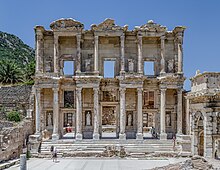
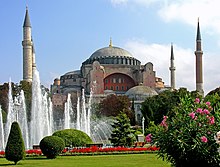
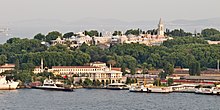
History of Turkey, by period[edit]
- Ancient period
- Ancient settlements in Turkey
- Ancient kingdoms of Anatolia
- Ottoman Empire
- Rebellions in the Ottoman Empire
History of Turkey, by subject[edit]
- Constitutional history of Turkey
- Economic history of Turkey
- Genetic history of the Turkish people
- History of the Jews in Turkey
- Military history of Turkey
- History of Turkish navies
Culture of Turkey[edit]






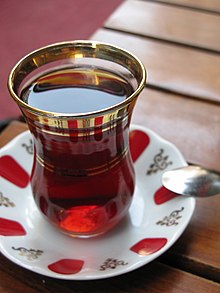



- Architecture
- Cuisine
- Languages
- Media
- Museums
- Public holidays
- Traditions
- Turkophilia
- World Heritage Sites in Turkey
Art in Turkey[edit]
Law in Turkey[edit]
- Constitution of Turkey
- Separation of church and state in Turkey
- Separation of powers under the Turkish Constitution
- Civil liberties in Turkey
- Abortion in Turkey
- Assisted suicide in Turkey
- Freedom of assembly in Turkey
- Freedom of association in Turkey
- Freedom of information in Turkey
- Freedom of movement under Turkish law
- Freedom of religion in Turkey
- Freedom of speech in Turkey
- LGBT rights in Turkey
- Polygamy in Turkey
- Prostitution in Turkey
- Freedom of the press in Turkey
- Criminal law in Turkey
- Family law in Turkey
- Intellectual property law in Turkey
- Commercial law in Turkey
- Jurisprudence in Turkey
- Law making in Turkey
- Law enforcement in Turkey
Religion in Turkey[edit]





- Bahá'í Faith in Turkey
- Buddhism
- Christianity in Turkey
- Islam
- Judaism
- Tengrism
- Yazidism
Sports in Turkey[edit]

Economy and infrastructure of Turkey[edit]
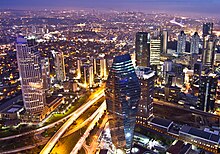




- Economic rank, by nominal GDP(2021): 20th
- Economic rank, by GDP (PPP) (2021): 11th
- Currency of Turkey: ₺ Turkish lira
- Banking in Turkey
- Telecommunications in Turkey
- Economic history of Turkey
- Energy in Turkey
- Health care in Turkey
- Industry trade groups in Turkey
- Tourism in Turkey
- Transportation in Turkey
- Trade policy of Turkey
- Wealth in Turkey
- Water supply and sanitation in Turkey
Education in Turkey[edit]
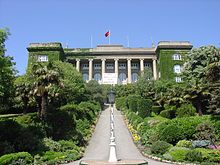

- Higher education in Turkey
- List of schools in Turkey
- Anti-schooling activism in Turkey
- Department of Education in Turkey
- Foreign language education in Turkey
- Homeschooling in Turkey
See also[edit]
- Topic overview:
- All pages with titles beginning with Turk
- All pages with titles beginning with Turkey
- All pages with titles beginning with Turkish
- All pages with titles containing Turk
- All pages with titles containing Turkey
- All pages with titles containing Turkish
References[edit]
- ^ "Turkey". The World Factbook. United States Central Intelligence Agency. July 14, 2009. Archived from the original on January 10, 2021. Retrieved July 23, 2009.

